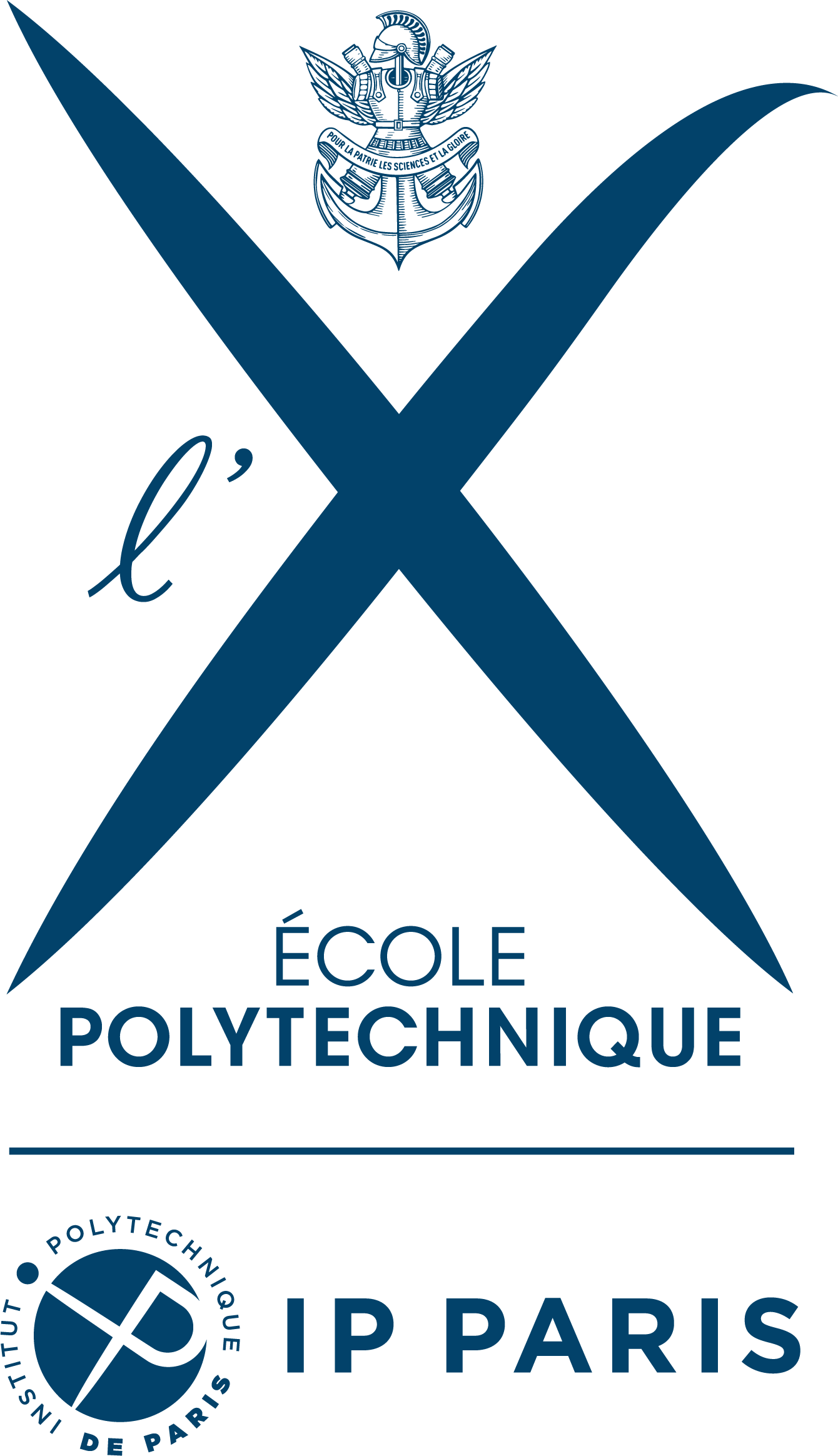[Grassmanniennes et arrangements de pseudo-sphères]
We extend vector configurations to more general objects that have nicer combinatorial and topological properties, called weighted pseudosphere arrangements. These are defined as a weighted variant of arrangements of pseudospheres, as in the topological representation theorem for oriented matroids. We show that in rank , the real Stiefel manifold, Grassmannian, and oriented Grassmannian are homotopy equivalent to the analogously defined spaces of weighted pseudosphere arrangements. As a consequence, this gives a new classifying space for rank vector bundles and for rank oriented vector bundles where the difficulties of real algebraic geometry that arise in the Grassmannian can be avoided. In particular, we show for all rank oriented matroids, that the subspace of weighted pseudosphere arrangements realizing that oriented matroid is contractible. This is a sharp contrast with vector configurations, where the space of realizations can have the homotopy type of any real semialgebraic set.
Nous étendons les configurations de vecteurs à des objets plus généraux, appelés arrangements de pseudo-sphères pondérées, aux propriétés combinatoires et topologiques plus agréables. Ils sont définis comme des variantes à poids d’arrangements de pseudo-sphères, tels qu’apparaissant dans le théorème de représentation topologique pour les matroïdes orientés. Nous montrons qu’en rang , la variété de Stiefel réelle, la grassmannienne et la grassmannienne orientée sont homotopes aux espaces définis de manière analogue pour les arrangements de pseudo-sphères pondérées. Par conséquent, cela définit de nouveaux espaces classifiants pour les fibrés vectoriels de rang et les fibrés vectoriels orientés de rang où les difficultés de géométrie algébriques soulevées par la grassmannienne peuvent être évitées. En particulier, nous montrons que pour tout matroïde orienté de rang , le sous-espace d’arrangements de pseudo-sphères pondérées qui le réalise est contractile. Cette situation contraste nettement avec celle des configurations de vecteurs, dont les espaces de réalisations peuvent avoir le type d’homotopie d’un ensemble semi-algébrique réel arbitraire.
Accepté le :
Publié le :
Keywords: Grassmannian, oriented matroid, pseudosphere arrangement, vector bundle
Mots-clés : Grassmannienne, matroïde orienté, arrangement de pseudosphères, fibré vectoriel
Michael Gene Dobbins 1
 CC-BY 4.0
CC-BY 4.0
@article{JEP_2021__8__1225_0,
author = {Michael Gene Dobbins},
title = {Grassmannians and pseudosphere~arrangements},
journal = {Journal de l{\textquoteright}\'Ecole polytechnique {\textemdash} Math\'ematiques},
pages = {1225--1274},
publisher = {\'Ecole polytechnique},
volume = {8},
year = {2021},
doi = {10.5802/jep.171},
language = {en},
url = {https://jep.centre-mersenne.org/articles/10.5802/jep.171/}
}
TY - JOUR AU - Michael Gene Dobbins TI - Grassmannians and pseudosphere arrangements JO - Journal de l’École polytechnique — Mathématiques PY - 2021 SP - 1225 EP - 1274 VL - 8 PB - École polytechnique UR - https://jep.centre-mersenne.org/articles/10.5802/jep.171/ DO - 10.5802/jep.171 LA - en ID - JEP_2021__8__1225_0 ER -
Michael Gene Dobbins. Grassmannians and pseudosphere arrangements. Journal de l’École polytechnique — Mathématiques, Tome 8 (2021), pp. 1225-1274. doi : 10.5802/jep.171. https://jep.centre-mersenne.org/articles/10.5802/jep.171/
[1] - “Extreme point and halving edge search in abstract order types”, Comput. Geom. 47 (2014) no. 3, part B, p. 518-526 | DOI | Zbl
[2] - “Matroid bundles”, in New perspectives in algebraic combinatorics (Berkeley, CA, 1996–97), Math. Sci. Res. Inst. Publ., vol. 38, Cambridge University Press, Cambridge, 1999, p. 1-21 | DOI | MR | Zbl
[3] - “Mod 2 cohomology of combinatorial Grassmannians”, Selecta Math. (N.S.) 8 (2002) no. 2, p. 161-200 | DOI | MR | Zbl
[4] - A combinatorial flag space, Ph. D. Thesis, Massachusetts Institute of Technology, 1993
[5] - “The homotopy type of the matroid Grassmannian”, Ann. of Math. (2) 158 (2003) no. 3, p. 929-952 | DOI | MR | Zbl
[6] - “Erratum to “The homotopy type of the matroid Grassmannian””, Ann. of Math. (2) 170 (2009) no. 1, p. 493 | DOI | MR | Zbl
[7] - Oriented matroids, Encyclopedia of Math. and its Appl., vol. 46, Cambridge University Press, Cambridge, 1999 | DOI | MR | Zbl
[8] - “Über die gegenseitige Beziehung der Ränder bei der konformen Abbildung des Inneren einer Jordanschen Kurve auf einen Kreis”, Math. Ann. 73 (1913) no. 2, p. 305-320 | DOI | Zbl
[9] - “Subquadratic encodings for point configurations”, J. Comput. Geom. 10 (2019) no. 2, p. 99-126 | MR | Zbl
[10] - “The Erdős-Szekeres problem for non-crossing convex sets”, Mathematika 60 (2014) no. 2, p. 463-484 | DOI | Zbl
[11] - “Realization spaces of arrangements of convex bodies”, Discrete Comput. Geom. 58 (2017) no. 1, p. 1-29 | DOI | MR | Zbl
[12] - Topology of oriented matroids, Ph. D. Thesis of A. Mandel, Ph. D. Thesis, University of Waterloo, 1978
[13] - “Oriented matroids”, J. Combin. Theory Ser. B 25 (1978) no. 2, p. 199-236 | DOI | MR | Zbl
[14] - “A topological proof of a theorem of Kneser”, Proc. Amer. Math. Soc. 39 (1973), p. 421-426 | DOI | MR | Zbl
[15] - “The canonical Schoenflies theorem”, Proc. Amer. Math. Soc. 27 (1971), p. 603-612 | DOI | MR | Zbl
[16] - “A combinatorial formula for the Pontrjagin classes”, Bull. Amer. Math. Soc. (N.S.) 26 (1992) no. 2, p. 304-309 | DOI | MR | Zbl
[17] - Geometric theory of functions of a complex variable, Translations of Math. Monographs, vol. 26, American Mathematical Society, Providence, RI, 1969 | MR | Zbl
[18] - “Computing pseudotriangulations via branched coverings”, Discrete Comput. Geom. 48 (2012) no. 3, p. 518-579 | DOI | MR | Zbl
[19] - Fibre bundles, Graduate Texts in Math., vol. 20, Springer-Verlag, New York, 1994 | DOI | MR
[20] - Foundational essays on topological manifolds, smoothings, and triangulations, Annals of Math. Studies, vol. 88, Princeton University Press, Princeton, NJ, 1977 | MR | Zbl
[21] - “Die Deformationssätze der einfach zusammenhängenden Flächen”, Math. Z. 25 (1926) no. 1, p. 362-372 | DOI | Zbl
[22] - Axioms and hulls, Lect. Notes in Computer Science, vol. 606, Springer-Verlag, Berlin, 1992 | DOI | MR | Zbl
[23] - “A counterexample to the extension space conjecture for realizable oriented matroids”, J. London Math. Soc. (2) 101 (2020) no. 1, p. 175-193 | DOI | MR | Zbl
[24] - “Yes, the ‘missing axiom’ of matroid theory is lost forever”, Trans. Amer. Math. Soc. 370 (2018) no. 8, p. 5907-5929 | DOI | MR | Zbl
[25] - “The universality theorems on the classification problem of configuration varieties and convex polytopes varieties”, in Topology and geometry—Rohlin Seminar, Lect. Notes in Math., vol. 1346, Springer, Berlin, 1988, p. 527-543 | DOI | MR | Zbl
[26] - “Two constructions of oriented matroids with disconnected extension space”, Discrete Comput. Geom. 10 (1993) no. 3, p. 271-285 | DOI | MR | Zbl
[27] - “Combinatorial models for the finite-dimensional Grassmannians”, Discrete Comput. Geom. 10 (1993) no. 3, p. 241-250 | DOI | MR | Zbl
[28] - “Allowable interval sequences and separating convex sets in the plane”, Discrete Comput. Geom. 47 (2012) no. 2, p. 378-392 | DOI | MR | Zbl
[29] - “Allowable interval sequences and line transversals in the plane”, Discrete Comput. Geom. 48 (2012) no. 4, p. 1058-1073 | DOI | MR | Zbl
[30] - “Sur la représentation conforme de domaines variables”, Acta Litt. Sci. Szeged 1 (1923), p. 180-186 | Zbl
[31] - “A inequality for arrangements of pseudolines”, Discrete Comput. Geom. 55 (2016) no. 2, p. 284-295 | DOI | MR | Zbl
[32] - “Stretchability of pseudolines is NP-hard”, in Applied geometry and discrete mathematics, DIMACS Ser. Discrete Math. Theoret. Comput. Sci., vol. 4, American Mathematical Society, Providence, RI, 1991, p. 531-554 | MR | Zbl
[33] - “The missing axiom of matroid theory is lost forever”, J. London Math. Soc. (2) 18 (1978) no. 3, p. 403-408 | DOI | MR | Zbl
Cité par Sources :



